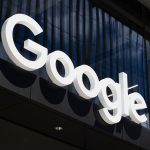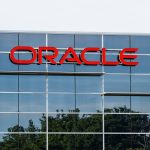
- Earnings Season
- Magnificent 7
- Stock Market
Alphabet Reports $102.3B Quarter as AI and Cloud Drive Record Growth
8 minute read

Alphabet posts $102.3B in Q3 revenue with 33% profit surge as AI, Cloud, and YouTube subscriptions propel diversified growth beyond Search.
Key Takeaways
- Revenue doubled in five years to $102.3 billion, with Google Cloud’s 34% surge to $15.2 billion—and first $3.6 billion operating profit—eclipsing legacy drags, as backlog swells 46% to $155 billion on mega-deals.
- AI as Systemic Multiplier: Processing 1.3 quadrillion tokens monthly, Gemini drives query expansion in Search (AI Mode doubles volumes) and powers 70% of Cloud clients, fortifying moats via proprietary TPUs, quantum Willow, and Veo 3’s 230 million videos.
- $35 billion net income, $98.5 billion liquidity, and Waymo/YouTube scale position Alphabet to absorb capex ($91–93 billion FY guide) and regulation, compounding leads in a returns-to-scale world.
Alphabet’s Inflection: The Architecture of a $100 Billion Quarter
When Alphabet reported third-quarter revenue of $102.3 billion on October 29, the figure arrived less as surprise than as confirmation—a crossing of threshold that clarifies rather than announces. Five years ago, the company’s quarterly revenue stood at roughly half that sum. The doubling represents not merely scale achieved but strategy vindicated: a deliberate construction of diversified revenue streams, anchored by search but increasingly distributed across cloud infrastructure, digital content, and emerging technologies. The quarter reveals a company that has metabolized artificial intelligence not as discrete product feature but as systemic capability, woven through operations that now process 1.3 quadrillion tokens monthly—a twentyfold increase in twelve months.
The revenue surge accompanied net income of $35 billion, up 33 percent year-over-year, and diluted earnings per share of $2.87, reflecting a 35 percent gain. Operating margins held at 30.5 percent despite absorbing a $3.5 billion European Commission fine—a testament to operational discipline amid regulatory headwinds. Free cash flow reached $24.5 billion, supporting capital expenditures that approached $24 billion in the quarter alone. CFO Ruth Porat raised full-year capex guidance to between $91 billion and $93 billion, signaling that infrastructure investment remains central to competitive positioning. These are not the financials of experimentation. They describe execution at industrial scale.
The Contours of Diversification
Google Services generated $87.1 billion in quarterly revenue, up 14 percent, with Search contributing $56.6 billion of that total. The dominance persists, but the composition has evolved. YouTube advertising reached $10.3 billion, while subscriptions—spanning Google One, YouTube Premium, and hardware—climbed to $12.9 billion, pushing total paid subscriptions beyond 300 million users. The subscription cohort represents more than user count; it reflects behavioral migration toward bundled services and recurring revenue models that smooth cyclical volatility.
Google Cloud’s performance merits particular scrutiny. Revenue of $15.2 billion marked 34 percent growth and, more significantly, operating profit of $3.6 billion—a decisive shift from the losses that characterized the segment’s earlier expansion. The backlog now stands at $155 billion, up 46 percent sequentially, with management noting 82 percent annual growth by certain metrics. The addition of multiple contracts exceeding $1 billion, reportedly surpassing the total of the prior two years combined, suggests enterprise adoption has moved beyond pilot phase. Seventy percent of existing Cloud customers have adopted AI-specific offerings, including Gemini Enterprise, which counts 2 million subscribers. Thirteen product lines now operate at run rates exceeding $1 billion annually.
This inflection in Cloud profitability alters the strategic calculus. For years, investors tolerated margin compression as the cost of competing with Amazon Web Services and Microsoft Azure. The segment’s turn to sustained profitability demonstrates that scale economies have begun to materialize—and that Alphabet’s differentiation, rooted in proprietary models and silicon, commands pricing power. When clients cite efficiency gains—WPP reporting 70 percent improvement in campaign workflows.
Infrastructure as Competitive Moat
Alphabet’s infrastructure investments increasingly define its competitive boundary. The company operates data centers equipped with NVIDIA’s GB300-powered A4X Max instances alongside its seventh-generation Tensor Processing Units, codenamed Ironwood, which will reach general availability shortly. Anthropic’s commitment to deploy up to one million TPUs on Google Cloud infrastructure underscores the magnetic pull of proprietary silicon. When computing becomes the constraining resource, control of chip design and fabrication becomes strategic advantage.
The quantum computing milestone deserves note beyond its technical achievement. Alphabet’s Willow chip executed a specific algorithm 13,000 times faster than leading supercomputers—a demonstration of quantum utility that moves beyond academic curiosity toward practical application. Michel Devoret, chief scientist of Google Quantum AI, recently received the Nobel Prize for foundational work in the field, making him Alphabet’s third laureate in two years. The convergence of talent, capital, and infrastructure creates conditions for breakthroughs that competitors struggle to replicate.
Research output has accelerated in parallel. The Gemini model family now includes 2.5 Pro, which leads industry benchmarks, while Veo 3 has generated 230 million videos. Gemini 3 is scheduled for release before year-end. The Gemini application itself claims 650 million monthly users, with query volume tripling quarter-over-quarter. These metrics suggest not merely adoption but intensifying usage—a pattern that typically precedes monetization.
Search’s Resilience and Reinvention
Critics have long predicted artificial intelligence would erode search economics, either through disintermediation or by eliminating the query-click-conversion chain that undergirds advertising revenue. CEO Sundar Pichai contests this narrative directly:
AI is driving an expansionary moment for search.
AI Overviews and AI Mode—used by 75 million people daily, with query volumes doubling—appear to stimulate rather than cannibalize search activity. Commercial queries are accelerating, and billions of clicks continue flowing to external websites, preserving the ecosystem that content publishers and advertisers depend upon.
The mechanism bears examination. Enhanced answers attract new query types, particularly from younger users who might otherwise bypass search entirely for social discovery or direct navigation. Improved relevance increases satisfaction, which drives frequency. The result is query expansion, not substitution. This dynamic mirrors historical transitions: mobile search initially worried investors who feared smaller screens would compress revenue per query, yet mobile ultimately expanded addressable time and context. AI appears to follow similar logic.
The Long Portfolio
YouTube maintains structural advantages that compound over time. Nielsen data confirms it has captured the largest share of U.S. streaming watch time for more than two years. An exclusive NFL game broadcast in Brazil drew 19 million viewers—a platform record that demonstrates YouTube’s capacity to serve as destination for premium live content. Shorts, once viewed as defensive response to TikTok, now monetize more effectively per hour than traditional long-form content, a reversal that validates format diversification. AI-driven tools for video generation, editing, and shopping integration give creators capabilities that increase production value while reducing friction.
Waymo, the autonomous vehicle venture, remains firmly in investment mode but with operational scale emerging. The 2026 roadmap includes launches in London and Tokyo, U.S. market expansions to Dallas, Nashville, Denver, and Seattle, and autonomous airport service in San Jose and San Francisco. Testing will commence in New York. Waymo for Business and Teens accounts extend addressable use cases. Regulatory approval in multiple jurisdictions and the accumulation of operational miles establish barriers that later entrants will struggle to overcome.
Balance Sheet as Strategic Reserve
Alphabet closed the quarter with 190,167 employees, $98.5 billion in liquid assets, and shareholder equity of $386.9 billion against a balance sheet totaling $536.5 billion. The financial position affords operational flexibility that most competitors lack: capacity to sustain multi-year capex cycles, absorb regulatory fines without material impact, pursue acquisitions or partnerships opportunistically, and weather macroeconomic volatility without forced retrenchment.
Risks remain tangible. Regulatory scrutiny persists across jurisdictions, with structural remedies still possible. Capital intensity at current levels—approaching $100 billion annually—requires sustained return on investment that depends on AI adoption trajectories not yet fully visible. Competition from well-capitalized rivals, particularly Microsoft and Amazon, ensures margin pressure in Cloud. Geopolitical fragmentation could constrain international expansion, particularly in markets where data sovereignty concerns intensify.
Implications
The $100 billion quarter crystallizes a decade of strategic repositioning. Alphabet has constructed a portfolio where Search remains foundational but no longer defines total prospects. Cloud profitability removes a persistent investor concern. YouTube’s dominance in streaming positions it for the secular shift away from linear television. Waymo accumulates irreplaceable operational data in autonomous systems. Quantum computing and advanced AI research create optionality on technological frontiers.
For institutional investors, the question evolves from whether Alphabet can maintain relevance to whether it can sustain growth at scale. The 16 percent revenue growth and 33 percent income growth suggest the company has not yet encountered the law of large numbers as binding constraint. For policymakers, the concentration of computing infrastructure, data, and talent within a single entity raises questions about market structure and competitive dynamics that traditional antitrust frameworks struggle to address.
The quarter does not mark culmination but rather transition—from company dependent on single dominant product to diversified technology conglomerate where artificial intelligence serves as common substrate. Execution risk remains, but the trajectory has clarified. In technology markets characterized by increasing returns to scale, early leads tend to compound. Alphabet exits the quarter with momentum that competitors must not merely match but overcome. That is the arithmetic of dominance.







